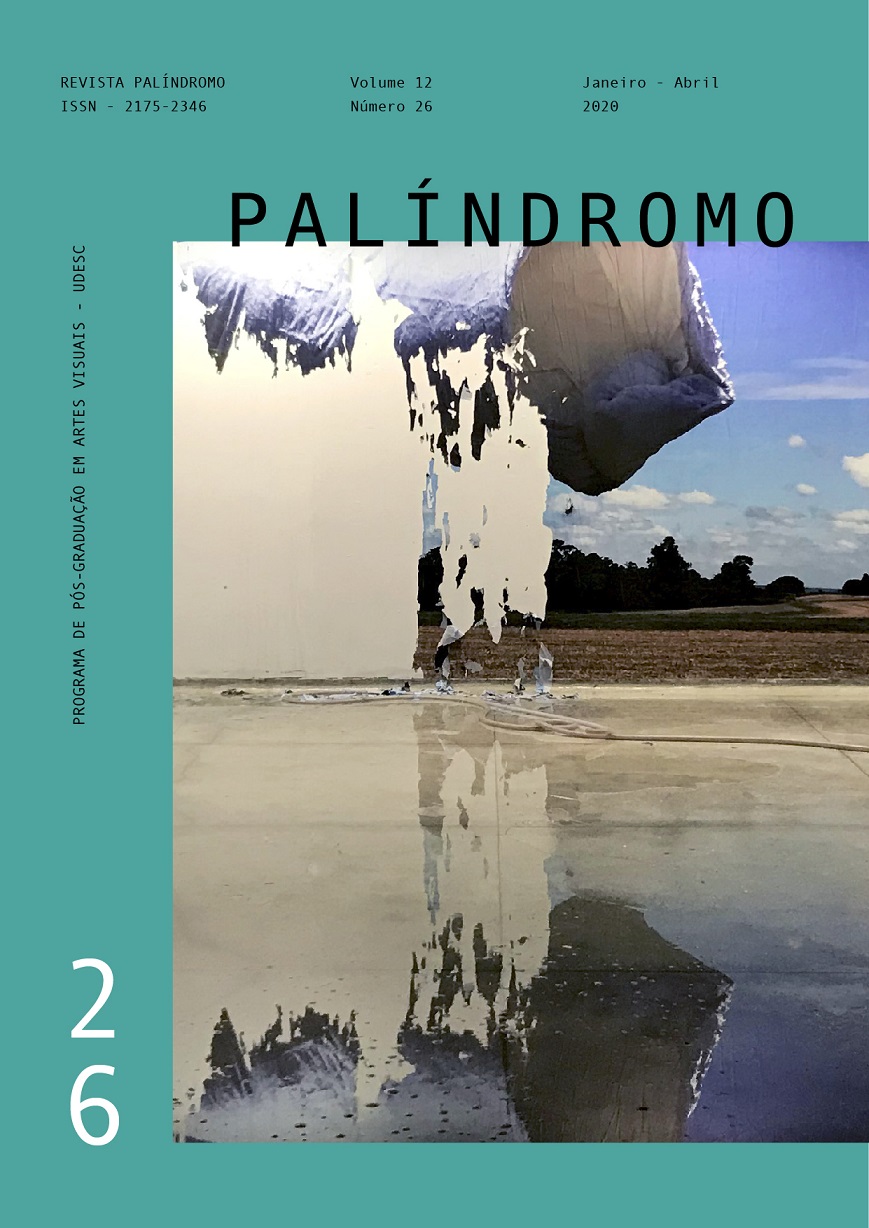O arquivo, esse monstro temível e sedutor, é transparente e opaco: as histórias de aprendizagem da artista plástica Voluspa Jarpao
DOI:
https://doi.org/10.5965/2175234612262020227Parole chiave:
Voluspa Jarpa, arquivos, ditaduras, tecnologias digitais, visibilidadesAbstract
O artigo investiga a instalação “Histórias de aprendizagem” da artista plástica chilena Voluspa Jarpa Saldías, que empreende a leitura do arquivo e sua desconstrução, articulando uma nova interpretação do passado, mas, sobretudo, uma leitura diversa da concepção da História, compreendida como uma descontinuidade perpassada pelo esquecimento e pelo apagamento, pois o que está em jogo é o próprio conceito de verdade histórica. A pesquisa empreende a perquirição dos sentidos do silêncio como algo que significa e que se distingue do implícito, que precisa do “dito” para colocar-se sob o sentido, sendo possível pensar o silêncio e a borradura como agentes da censura que dizem respeito ao que não pode ser enunciado em determinadas circunstâncias.
Downloads
Riferimenti bibliografici
ARENDT, H. Ensayos de comprensión: 1930-1954. Madrid: Caparrós editores, 2005.
CRARY, J. Suspensões da percepção: atenção, espetáculo e cultura moderna. São Paulo: Cosac Naify, 2013.
DERRIDA, J. Mal de arquivo – uma impressão freudiana. Rio de Janeiro: Relume-Dumará, 2001.
DIDI-HUBERMAN, G. A imagem sobrevivente: história da arte e tempo dos fantasmas segundo Aby Warburg. Rio de Janeiro: Contraponto; Museu de Arte do Rio, 2013.
FOUCAULT, M. A ordem do discurso. São Paulo: Loyola, 2007.
FOUCAULT, M. A arqueologia do saber. Rio de Janeiro: Forense Universitária, 2008.
FOUCAULT, M. Qu'est-ce que la critique? Critique et Aufklärung. Conferência proferida em 27 de maio de 1978. Tradução de Gabriela Lafetá Borges e revisão de Wanderson Flor do Nascimento. Bulletin de la Société Française de Philosophie, vol. 82, n. 2, p. 35-63, avr/juin, 1990. Disponível em: http://portalgens.com.br/portal/images/stories/pdf/critica.pdf. Acesso em: 3.4.2018.
GIANVECCHIO, A. Presença na ausência: amnésias políticas e resistências poéticas na memória da ditadura civil-militar brasileira (1964-1981). Tese de Doutorado. 197 p. São Paulo: FAUUSP, 2015.
JARPA, V. Historia, archivo e imagen: sobre la necesidad de simbolizar la historia. Contra Corriente, v. 12, n. 1, 2014, p. 14-29. Disponível em: https://acontracorriente.chass.ncsu.edu/index.php/acontracorriente/article/download/1295/2219/. Acesso em: 20.10.2018.
JARPA, V. Diálogos de la memoria. Archivos para La Paz. Seminario Internacional. Centro de Memoria Historia. Disponível em: http://centrodememoriahistorica.gov.co/descargas/dialogos-memoria/ponencias/011-VoluspaJarpa.pdf. Acesso em: 20.10.2018.
KOSELLECK, R. A configuração moderna do conceito de História. In: KOSELLECK, R. O conceito de História. Belo Horizonte: Autêntica, 2013.
ROLNIK, S. Furor de arquivo. Disponível em: https://www.ppgav.eba.ufrj.br/wp-content/uploads/2012/01/ae22_Suely_Rolnik.pdf. Acesso em: 20.4.2019.
Downloads
Pubblicato
Come citare
Fascicolo
Sezione
Licenza
Copyright (c) 2020 Palíndromo

TQuesto lavoro è fornito con la licenza Creative Commons Attribuzione 4.0 Internazionale.
DECLARAÇÃO DE DIREITOS AUTORAIS
a. Os artigos publicados pela revista são de uso gratuito, destinados a aplicações acadêmicas e não comerciais. Todos os direitos autorais são atribuídos à revista. Os artigos cujos autores são identificados representam a expressão do ponto de vista de seus autores e não a posição oficial da Revista Palíndromo. O (s) autor (es) compromete-se sempre que publicar material referente ao artigo publicado no Palíndromo mencionar esta publicação da seguinte forma:
Este artigo foi publicado originalmente pela revista Palíndromo em seu volume (coloque o volume), número (coloque o número) no ano de (coloque o ano) e pode ser acessado em: http://www.revistas.udesc.br/index.php/palindromo
b. Plágio, em todas as suas formas, constitui um comportamento antiético de publicação e é inaceitável. A revista Palíndromo utiliza o software iThenticate de controle de similaridade


